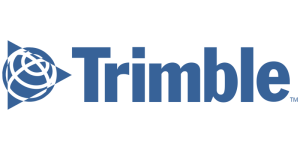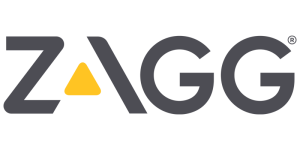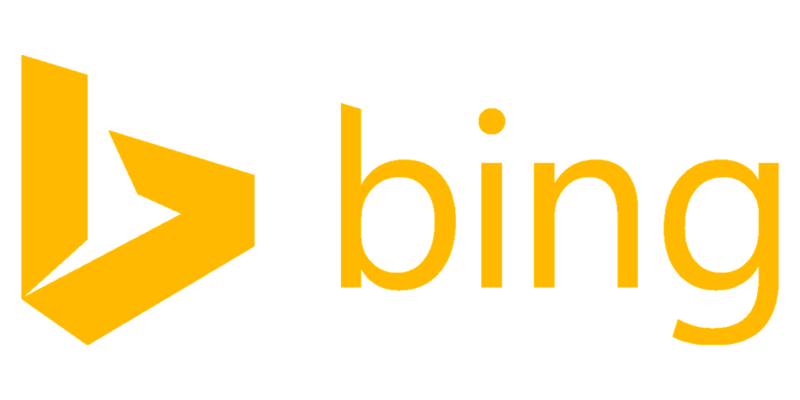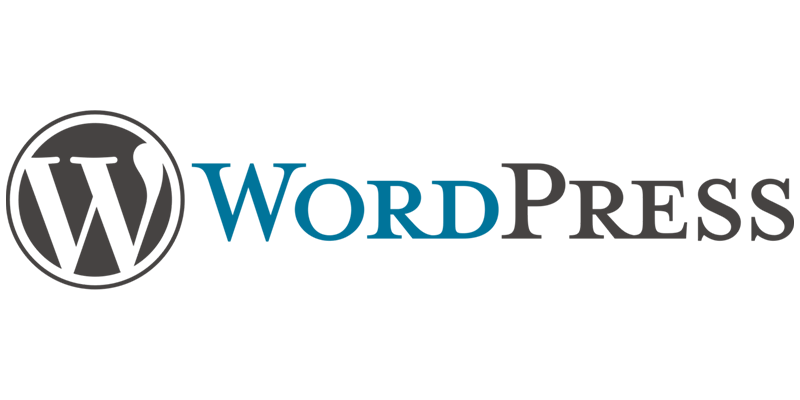What is the relevancy of Site speed for SEO KPIs in 2024?
In the ever-evolving landscape of search engine optimization (SEO), site speed has emerged as a critical factor for online success. As we look toward 2024, the importance of quick loading times is increasingly relevant to SEO Key Performance Indicators (KPIs), influencing everything from user experience to search engine rankings. JEMSU, a trailblazer in digital advertising, understands that the intersection of technology and user expectations dictates the benchmarks for what constitutes a successful online presence.
For businesses aiming to stay ahead of the curve, JEMSU emphasizes the need for a website that doesn’t just dazzle with content but also delivers it at lightning-fast speeds. The correlation between site speed and vital SEO KPIs such as bounce rate, session duration, and organic visibility is stronger than ever, presenting a direct impact on conversion rates and, ultimately, the bottom line. As search engines continue to prioritize user experience, JEMSU’s expertise in optimizing site speed ensures that businesses not only meet but exceed the standards set forth by industry leaders.
Looking ahead to 2024, JEMSU is poised to guide companies through the intricate dance of optimizing digital assets for speed without compromising quality. The relevancy of site speed for SEO KPIs is no longer a question of if but how, and JEMSU’s commitment to innovation and performance drives their clients to outpace competition and achieve exceptional search engine results. In this article, we’ll explore the pivotal role of site speed in the context of SEO KPIs and how businesses can harness its potential for optimum online performance as we navigate the digital landscape of 2024.
Table of Contents
1. Impact of Site Speed on User Experience (UX) and Engagement
2. Site Speed’s Role in Search Engine Ranking Algorithms
3. Mobile Optimization and Accelerated Mobile Pages (AMP)
4. Technical SEO: Site Speed Metrics and Monitoring Tools
5. Core Web Vitals as Google’s User Experience Signals
6. Relationship Between Site Speed, Conversion Rates, and Bounce Rates
7. FAQs
Instant SEO Checker + Score & Report
Enter the URL of any landing page to see how optimized it is for one keyword or phrase...
Impact of Site Speed on User Experience (UX) and Engagement
When it comes to optimizing a website, the significance of site speed cannot be overstated, especially considering its impact on user experience (UX) and engagement. For a digital advertising agency like JEMSU, understanding and enhancing site speed is a crucial factor in delivering optimal results for clients. In the digital landscape of 2024, users expect swift and seamless online interactions. Sluggish websites can lead to frustration, decreased satisfaction, and ultimately, a decline in user engagement.
A common analogy to understand the importance of site speed is to compare a website to a retail store. Just as customers may walk out of a store if they are not promptly attended to, online visitors may abandon a website that takes too long to load. Indeed, statistics show that the probability of a bounce increases substantially as page load time goes up. For instance, a study by Google found that as page load time goes from one second to ten seconds, the probability of a mobile user bouncing increases by 123%. This highlights the direct relationship between site speed and user retention.
Furthermore, a delay of even a couple of seconds can dampen the user experience, leading to a decrease in engagement metrics such as time on site and pages per session. JEMSU leverages this knowledge to ensure that the websites it manages are optimized for speed, thereby enhancing the likelihood of visitor retention and engagement.
In terms of engagement, faster websites also encourage users to interact more with the content, whether it’s reading blog posts, viewing products, or filling out contact forms. For example, a retail client of JEMSU experienced a significant increase in online sales after implementing site speed optimization strategies, which reduced their average page load time by several seconds. This demonstrates how improved site speed can directly contribute to better user engagement and, ultimately, higher conversion rates.
By prioritizing site speed, JEMSU not only aids in providing a better user experience but also establishes a foundation for robust user engagement. In an era where attention spans are shorter than ever, ensuring that your website performs quickly and efficiently is a key component in capturing and maintaining user interest.
Google Ads Success Example
The Challenge: The Challenge: Increase new dental patients with better Google Ads campaigns.
Site Speed’s Role in Search Engine Ranking Algorithms
As digital marketing experts at JEMSU well understand, site speed is not merely a convenience factor for users; it is a critical component in how search engines, like Google, rank websites. The emphasis on speed is rooted in the user experience—search engines recognize that users prefer fast-loading pages and tend to reward sites that provide this feature with higher rankings.
The role of site speed in search engine ranking algorithms has only grown in significance over the years. In 2024, this trend continues, with search engines updating their algorithms to place even greater weight on the speed with which a site responds. This is because statistics show a direct correlation between page load times and user satisfaction. For instance, a study by Google found that as page load time goes from one second to ten seconds, the probability of a mobile user bouncing increases by 123%. This stark statistic underlines the importance of speed in retaining visitors.
JEMSU recognizes that a fast website provides a competitive edge. As consumers become more demanding and their attention spans shorter, a delay of a few seconds can mean the difference between a converted customer and a lost opportunity. Analogous to a sprinter in a race, every millisecond counts, and in the race for visibility on the search engine results page (SERP), the swiftest sites are often awarded the top positions.
Optimizing site speed is therefore a key strategy in search engine optimization (SEO). Examples of significant speed optimization methods include reducing server response times, enabling compression, optimizing images, and leveraging browser caching. These techniques help shave precious seconds off load times, which can lead to improved rankings.
Furthermore, Google has clearly stated that speed is a ranking factor for both desktop and mobile searches, illustrating the universal importance of a fast-loading site. The message is clear: if two sites are otherwise equal in terms of content quality and SEO, the faster site is likely to rank higher. This is an area where JEMSU’s expertise can be particularly valuable, as we help clients navigate the complex and ever-evolving landscape of SEO KPIs, ensuring that site speed is optimized to meet the expectations of both users and search engines.
Mobile Optimization and Accelerated Mobile Pages (AMP)
In the realm of SEO, mobile optimization has become an indispensable factor for achieving top search engine results. In 2024, this is more crucial than ever, considering the overwhelming increase in mobile device usage for internet access. JEMSU recognizes the importance of optimizing websites for mobile devices to ensure a seamless user experience, which in turn positively impacts SEO KPIs.
One significant aspect of mobile optimization is the implementation of Accelerated Mobile Pages (AMP). AMP is an open-source framework that enables the creation of fast-loading web pages for mobile devices. By prioritizing speed and simplicity, AMP pages deliver content almost instantaneously to users. This lightning-fast delivery is essential, as statistics show that mobile users are likely to abandon a site that takes longer than three seconds to load.
JEMSU leverages AMP to help businesses reduce their website’s load time, which is a positive signal for search engines like Google. Search engines have been increasingly prioritizing mobile-friendly websites in their ranking algorithms. As such, a website that loads quickly on mobile devices is more likely to rank higher in search results. This emphasis on speed aligns with user expectations for quick access to information, especially when they’re on the go.
Imagine a scenario where two similar businesses are competing for visibility in search results. One has optimized its website with AMP, while the other has not. The former will not only load faster on a user’s device but will also be more likely to be featured prominently in mobile search results. This analogy highlights the competitive advantage that mobile optimization can provide, and it’s something that JEMSU integrates into its digital marketing strategies.
Moreover, AMP can contribute to improved user engagement and reduced bounce rates. Users are more inclined to stay on a page that loads quickly and provides a smooth experience. Engaged users are more likely to convert, whether that means making a purchase, signing up for a newsletter, or contacting the business for more information. By focusing on mobile optimization and AMP, JEMSU helps businesses not only meet but exceed their SEO performance indicators.
SEO Success Story
The Challenge: The Challenge: Design an SEO friendly website for a new pediatric dentist office. Increase new patient acquisitions via organic traffic and paid search traffic. Build customer & brand validation acquiring & marketing 5 star reviews.
Technical SEO: Site Speed Metrics and Monitoring Tools
Understanding the intricacies of technical SEO is paramount, especially when considering the impact of site speed on overall SEO performance. At JEMSU, we emphasize the importance of meticulously analyzing site speed metrics to provide a solid foundation for SEO strategies. Site speed is not just a single number; it encompasses various metrics that can influence how search engines evaluate and rank a website.
One of the critical metrics that JEMSU closely monitors is the Time to First Byte (TTFB), which measures the responsiveness of a web server. Another essential metric is the First Contentful Paint (FCP), which indicates the time taken for the first piece of content to be visible to the user. These metrics, along with others like Speed Index and Total Blocking Time, contribute to a more comprehensive picture of a site’s performance.
Monitoring tools play a crucial role in this process. Tools like Google’s PageSpeed Insights provide valuable insights into how well a website performs and offer suggestions for improvement. At JEMSU, we also utilize advanced monitoring solutions that continuously track site speed and alert us to any changes that could affect user experience or search engine visibility.
For example, a study released by Google underscores the importance of site speed, revealing that as page load time goes from one second to ten seconds, the probability of a mobile user bouncing increases by 123%. This statistic highlights the need for businesses to prioritize site speed to maintain a competitive edge in search engine rankings and to keep users engaged.
Further illustrating the importance of site speed, consider an analogy to a high-speed train system. Just as passengers expect a fast, reliable, and efficient journey, website visitors demand a similar experience. Any delays, even minor ones, can lead to dissatisfaction and a loss of trust, which, in the digital world, translates to higher bounce rates and lost opportunities for conversions.
JEMSU recognizes that in the dynamic landscape of SEO, staying ahead means leveraging the best tools and practices to measure and optimize site speed. As search engines evolve and user expectations rise, we remain committed to ensuring that our clients’ websites are not just fast, but lightning-fast, reflecting the best technical SEO principles and delivering superior user experiences.
Jemsu has been a great asset for us. The results have grown at strong positive linear rate. They have been extremely accessible, flexible, and very open about everything. Natalya is a star example of how to work with your accounts to drive them forward and adjusts to their quirks. Jaime is able to clearly communicate all of the work that is being done behind the scenes and make sure that all of my team is understanding.
I couldn’t be more pleased with my JEMSU Marketing Team!
Julia, Tamara, Joelle and Dally have exceeded my expectations in professionalism, creativity, organization, and turn around time with my Social Media Management project.
I have thoroughly enjoyed sharing my journey with this team of empowered women!
Thank you JEMSU! Your team designed and launched my new website, and developed strategies to drive traffic to my site, which has increased my sales. I highly recommend your Website & SEO Agency!
Jemsu has always been professional and wonderful to work with on both the SEO and website design side. They are responsive and take the time to explain to us the complicated world of SEO.
Jemsu is an excellent company to work with. Our new website blows away our competition! Unique, smooth, and flawless. Definite wow factor!
The folks at JEMSU were excellent in designing and launching our new website. The process was well laid out and executed. I could not be happier with the end product and would highly recommend them to anyone.
Jemsu is a great company to work with. Two prong approach with a new site and SEO. They totally redesigned my website to be more market specific, responsive, and mobile friendly. SEO strategy is broad based and starting to kick in. My marketing will also be adding Facebook and Google ads in the coming weeks. Thanks for your all you hard work.
JEMSU has wworked with our team to create a successful campaign including incorporating an overall rebranding of our multiple solutions. The JEMSU team is embracing of our vision and responds timely with life of our ideas.
JEMSU is great company to work with. They listen & really work hard to produce results. Johnathan & Sasha were such a big help. If you have a question or concern they are always there for you.
I would definitely recommend them to anyone looking to grow their company through adwords campaigns.
Jemsu have exceeded our expectations across all of our digital marketing requirements, and I would recommend their services to anyone who needs expertise in the digital marketing space.
JEMSU was able to quickly migrate my site to a new host and fix all my indexation issue. I look forward to growing my services with JEMSU as I gain traffic. It’s a real pleasure working with Julian and Juan, they’re both very professional, courteous and helpful.
JEMSU is incredible. The entire team Is professional, they don’t miss a deadlines and produce stellar work. I highly recommend Chris, Rianne, and their entire team.
We’ve been working with JEMSU for about five months and couldn’t be happier with the outcome. Our traffic is up and our leads are increasing in quality and quantity by the month. My only regret is not finding them sooner! They’re worth every penny!
Core Web Vitals as Google’s User Experience Signals
As we head into 2024, the significance of site speed for SEO KPIs continues to evolve, with Google’s Core Web Vitals emerging as critical user experience signals that directly impact a website’s search engine rankings. JEMSU, as a leader in digital advertising, recognizes the importance of these metrics and the role they play in the success of any online business.
Core Web Vitals are a set of specific factors that Google considers important in a webpage’s overall user experience. They consist of three main metrics: Largest Contentful Paint (LCP), which measures loading performance; First Input Delay (FID), which measures interactivity; and Cumulative Layout Shift (CLS), which measures visual stability.
To draw an analogy, if a website were a brick-and-mortar store, Core Web Vitals would be akin to the store’s layout, the efficiency of the checkout process, and the organization of products. Just as a well-organized store with quick service attracts more customers and sales, a website with excellent Core Web Vitals will attract more visitors and potentially higher search engine rankings.
JEMSU understands that a superior user experience, as quantified by these metrics, is not just a nicety—it’s a necessity. For instance, a study by Google found that when a site meets the recommended thresholds for Core Web Vitals, users are 24% less likely to abandon the page. This statistic illustrates the profound impact that optimizing for these metrics can have on user engagement and retention.
Moreover, Core Web Vitals are not static; they evolve as user expectations change and technology advances. JEMSU stays ahead of the curve by continuously analyzing and optimizing these key performance indicators for our clients. By employing state-of-the-art monitoring tools and staying informed about the latest updates, we ensure that the websites we manage not only meet but exceed the standards set forth by Google.
In practice, this means that JEMSU diligently works to enhance loading speeds, reduce interactivity delays, and prevent unexpected layout shifts, among other optimizations. For example, by optimizing images and leveraging next-gen formats, we can significantly decrease LCP times, leading to a snappier loading experience. Similarly, by minimizing JavaScript execution time, we can improve FID and make websites more responsive to user interactions.
Core Web Vitals are set to remain a cornerstone of SEO strategy in 2024 and beyond. With JEMSU’s expertise, businesses can ensure their websites deliver a user experience that not only satisfies these critical metrics but also drives improved SEO performance and, ultimately, greater online success.
SEO Success Story
The Challenge: Increase dent repair and body damage bookings via better organic visibility and traffic.
Relationship Between Site Speed, Conversion Rates, and Bounce Rates
In the digital landscape of 2024, the relationship between site speed, conversion rates, and bounce rates remains a critical aspect of SEO KPIs. As a full-service digital advertising agency, JEMSU deeply understands how these factors interplay to affect a website’s performance in search engine results and its overall business success.
Site speed is a pivotal factor in user satisfaction. Studies have consistently shown that slower websites lead to higher bounce rates. For example, stats indicate that a delay of just a second in page response can result in a 7% reduction in conversions. In an era where users expect near-instantaneous loading, this can be the difference between a thriving online business and one that fails to engage potential customers.
JEMSU integrates these insights into their strategic planning for clients, optimizing website speeds to ensure that users are not left waiting. The analogy often used is that of a retail store; if a customer walks in and is immediately greeted and assisted, they are more likely to make a purchase. Conversely, if they are ignored, they will leave quickly without buying anything. Similarly, a fast-loading website welcomes users and encourages them to stay, explore, and ideally convert, whether that be making a purchase, signing up for a newsletter, or filling out a contact form.
Conversion rates are directly affected by how quickly a page loads. A website that is optimized for speed is more likely to retain visitors, thereby increasing the likelihood of converting them into customers. JEMSU helps clients achieve this by employing a variety of techniques, such as optimizing images, leveraging browser caching, and reducing server response time.
Bounce rates are another critical KPI influenced by site speed. A “bounce” occurs when a visitor leaves a website from the landing page without browsing any further. High bounce rates can be indicative of several issues, but slow load times are often a significant contributor. By reducing the time it takes for a page to display its content, JEMSU ensures that clients’ websites maintain low bounce rates, which not only improves user experience but also sends positive signals to search engines like Google, which prioritize user-friendly sites in their rankings.
In the context of SEO, these elements are interdependent. A fast website can lead to lower bounce rates and higher conversion rates, which in turn can result in better search rankings. JEMSU’s expertise in this domain ensures that clients’ websites are finely tuned to meet the expectations of modern users and search engines alike, leading to a stronger online presence and better business outcomes.
FAQS – What is the relevancy of Site speed for SEO KPIs in 2024?
1. **Why is site speed important for SEO in 2024?**
– Site speed remains crucial for SEO in 2024 because it affects user experience, which is a significant ranking factor for search engines. Faster websites can lead to better engagement, lower bounce rates, and higher conversions, which can positively influence search engine rankings.
2. **How does site speed impact search engine rankings?**
– Search engines like Google use site speed as a ranking signal. A faster site can receive a ranking boost as it provides a better user experience. Slow-loading sites may be penalized in rankings as they lead to a poor user experience.
3. **What are the best tools to measure site speed in 2024?**
– As of 2024, some of the best tools to measure site speed include Google PageSpeed Insights, GTmetrix, Pingdom, and WebPageTest. These tools provide detailed insights into page load times and recommendations for improvement.
4. **What is a good site speed to aim for in 2024?**
– A good site speed to aim for in 2024 is a page load time of under 2 seconds. However, the faster, the better, as anything below 1 second is considered excellent and will provide a competitive advantage.
5. **How can I improve my website’s site speed?**
– To improve your website’s site speed, optimize images, minify CSS, JavaScript, and HTML, leverage browser caching, use a content distribution network (CDN), reduce server response time, and eliminate render-blocking resources.
6. **Is mobile site speed as important as desktop site speed for SEO?**
– Yes, mobile site speed is equally, if not more, important than desktop site speed for SEO, especially since mobile-first indexing is the standard approach. Search engines prioritize the mobile version of content for indexing and ranking.
7. **Will improving site speed directly increase my SEO KPIs?**
– Improving site speed can positively impact SEO KPIs such as page views, bounce rate, and time on site. While it may not directly increase rankings, it contributes to a better user experience, which is a factor in SEO performance.
8. **Are there any new site speed metrics in 2024 that I should be aware of?**
– As of my knowledge cutoff in 2023, the Core Web Vitals introduced by Google in 2020 were the latest significant metrics, focusing on loading performance, interactivity, and visual stability. It’s advisable to check for any updates from Google or other search engines for new metrics.
9. **How does site speed affect conversion rates?**
– Site speed has a direct correlation with conversion rates. Faster-loading sites tend to have higher conversion rates as they provide a more seamless and enjoyable user experience. Slow websites can frustrate users, leading to higher abandonment rates and lost sales.
10. **What role does hosting play in site speed for SEO?**
– The quality of web hosting plays a significant role in site speed for SEO. High-performance servers with good uptime, fast network connectivity, and resources like SSD storage can significantly reduce page load times and improve overall site performance, which in turn can benefit SEO.
SEO Success Story
The Challenge: Increase new dental patients with better organic visibility and traffic.















